QuestionHello,
I have a male cockatiel who is a few years old. I rescued him from a home where he lived in a tiny cage in a neglectful situation. He now lives in a that could probably fit a macaw inside it comfortably, but the bars are spaced close together. His cagemates are to bugies that lived in the same cage that he used to. They are now tame, but Jack the cockatiel is not. He seems impossible to tame. I have had him for about six months now. He seems much happier than when he first arrived he sings a lot and interacts with the parakeets. I want to get a hand raised cockatiel and possibly put it with Jack, is that posssible?What taming method would you recomend? I would like a friendly bird, but I really just want him to be happy. Thanks for your time.
Sincerely,
Emily
AnswerHi EMily.
Follow some of these things I have found, I have tamed to many just alot of patience and love and quiet moments with the bird.
All Rights Reserved
Copyright Notice & Disclaimer Statement
When you first get your pet home you should leave it fairly undisturbed for a few days while it takes in its new surroundings and gets used to them. If you have bought a tame baby the only thing that you will have to do to begin a rewarding pet relationship is to gently take it out of its cage and play with it for short periods several times a day. There are 2 good reasons not to overdo it. First, the baby should not be separated from its food and water for extended periods. It is still growing rapidly, eating often, and sleeping more than an adult bird. I would suggest keeping early play sessions under 15 minutes then returning the baby to its cage for at least twice as long as it was out. Second, it is tempting to lavish a great deal of attention on a new animal for a few weeks while you are very excited about having a new friend, then, just as it becomes accustomed to a high level of human interaction, sharply reduce the amount of time you spend playing with your bird as other things in your life reassert their usual priority. If you can, its best to figure out what level of interaction you're likely to be able to sustain over the long run and start as you intend to go on.
These play times are a good opportunity to introduce the up command which will be important throughout your bird's life as a means of keeping it tame and reminding it who is flock leader in your house. It is very simple. Just put your extended finger crosswise against the bird's chest and say "up" or "step up" in a firm but not aggressive voice while gently pushing up and back. The bird will lose its balance and step up onto your finger. Soon it will respond to the verbal command without your having to push against its chest. Laddering is an exercise where you have the bird repeatedly step from one hand to another. A few minutes of laddering each day is your best insurance against dominance related behavior problems later on.
If you have an older, never tamed bird or a lapsed hand-fed you will have to take things much more slowly. The initial period of adjustment will be a bit longer and the taming will go much more slowly. I begin with a good wing clip since a non-flying bird can't run away as easily and is more dependent on me. Then I start by simply holding my hand inside the cage while talking to the bird in a soothing voice. It doesn't matter what you say -- you can read the paper, recite poetry, discuss politics (if you can keep your voice calm ), whatever. When the bird has settled down from its initial reaction to your hand you can either end the session with a bit of praise for the bird or you can move your hand a bit closer and keep talking. Just be sure to hold your hand still, the bird will never settle down if you are wiggling it around.
After you've made progress with the hand in the cage you will want to get the bird out to interact with it outside its secure territory. Some birds will come out on their own, others are cage bound and will not venture outside the only oasis of security they have ever known. If your bird will come out you may be able to get him to step onto a spare perch so that you can move him to a small, enclosed room where the two of you can be alone in an environment where the bird will be inclined to cling to you as the only familiar object. If not you will have to towel the bird to get him out of the cage (gently cover him with a medium size towel so that he can be handled without fear of being bitten, because the bird's eyes are covered it can't see any danger and is more tolerant of handling). This is best done in a steady, no-nonsense manner that is neither aggressive nor so timid that you fail. Do not begin unless you are sure that you have the stubbornness and the patience to maintain your efforts until your bird is out. If your bird is extremely nervous you will do nothing but take him out and then return him to his safe place. If the bird accepts the toweling without panicking carry him to a small, enclosed space such as a shower enclosure, a small hallway that you can block off, or a closet that isn't so cluttered as to be dangerous. It must be out of sight of its cage. Personally I've always used the shower enclosure. The point is to get the bird into a place that's too small for it to be able to easily run away from you.
Since you are the only familiar object in the area and it can't see its own territory it will be much more responsive to taming. Continue to talk to your bird and, when it seems calm offer it your arm, or a spare perch and begin to teach the up command. Never end the session until some progress has been made -- at least a reduction in nervousness -- but don't drag it on. Short, frequent sessions are best In time you will be able to pick the bird up on your hand and carry it about. Petting or using your hand to pick the bird up inside the cage may be a long time coming but may be possible in the long run. Persistence and constancy are the key.
http://groups.msn.com/BirdLoversGroup/evenmorebitingpart1.msnw
http://www.birdtricks.com/Helpful-Parrot-Sites/40/cockateil-training.html
try some of these sites in assisting you to train the bird, for I had one name, Sonny that was so sweet, smart and loved me and not had one since, bought a couple of normal color was so dumb, Sonny was a PIED beautiful bird and so smart, not had one since, kinda gave up when he died at 11 yrs old.
Kind Regards
Pattt

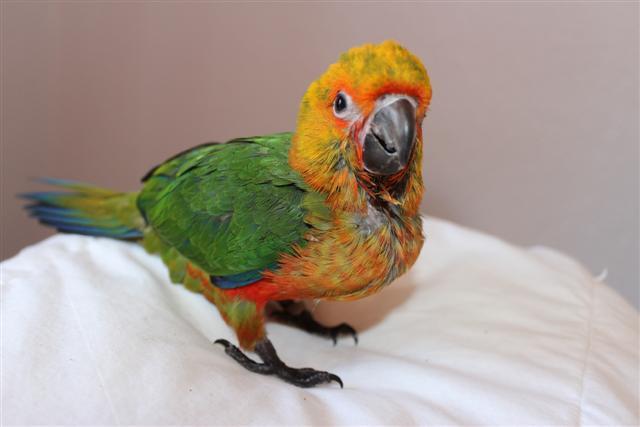 Jenday Conure Weaning?
Question
Castor the Conure
Hi
I have a 9 week o
Jenday Conure Weaning?
Question
Castor the Conure
Hi
I have a 9 week o
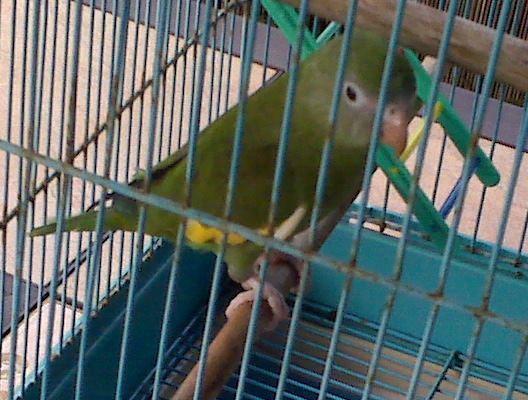 What type of parrot is this?
Question
Friendly bird
A week ago ths small parrot flew
What type of parrot is this?
Question
Friendly bird
A week ago ths small parrot flew
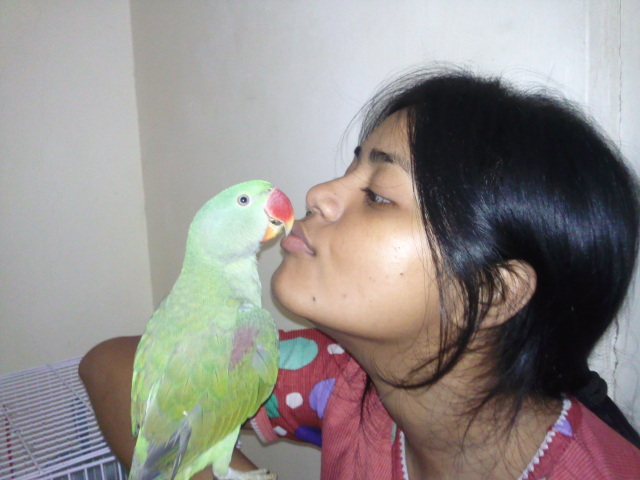 can i give my parrot chole(chana) called in hindi
Question
my little chaddi alexa
dear sir,
can give chan
can i give my parrot chole(chana) called in hindi
Question
my little chaddi alexa
dear sir,
can give chan
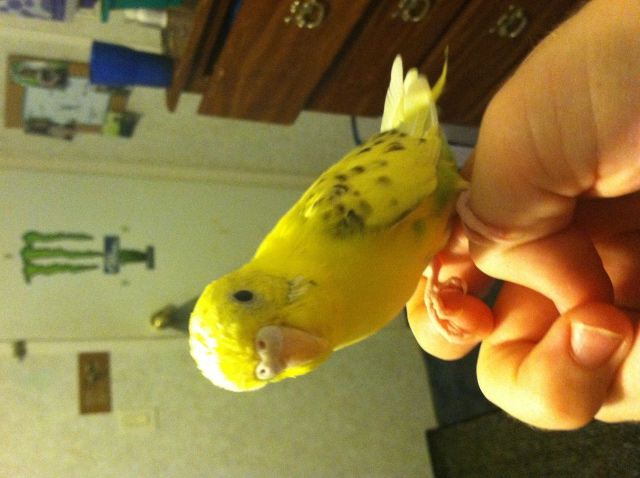 Parakeet gender
Question
Parakeet
Hi, I looked for an expert und
Parakeet gender
Question
Parakeet
Hi, I looked for an expert und
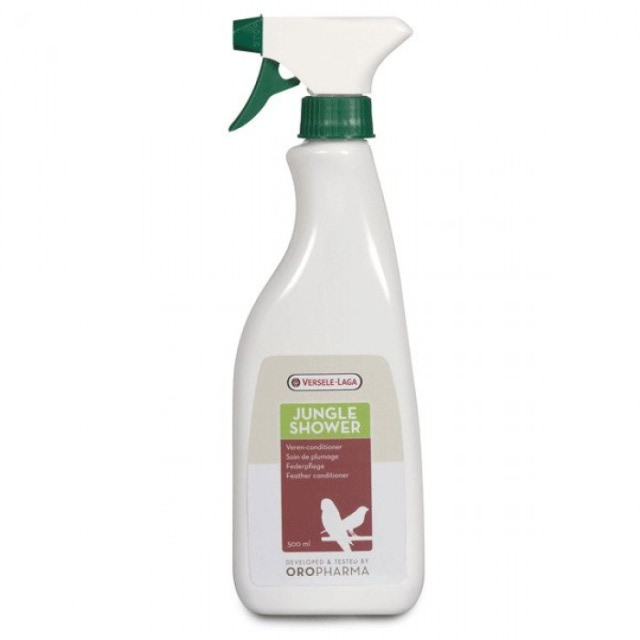 Indian Ringneck Health Issue
QuestionI have an Indian Ringneck who had been neglecte
Indian Ringneck Health Issue
QuestionI have an Indian Ringneck who had been neglecte